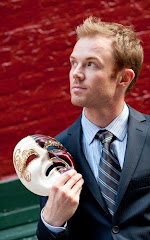With slightly more than a year under my belt living in New York City, I remain simultaneously curious of and resilient to the anesthetizing effects of such a vibrant, mentally wearing (often hostile) yet threateningly exciting cityscape. While my discoveries and adventures extend beyond the confines of this urban jungle, my observations remain disturbingly consistent - "bigger is better" here, and one's perceived requirement of protection from an increasingly hostile and dystopic environment resists the increasing pressures and realities of resource scarcity and a decaying urban infrastructure. We continue to elude ourselves of these worldly realities and select biophobic armatures that perpetuate our dissociation from that which we hold in cautious reverence. (Original publication here).
"Instead of struggling to keep the public domain in good repair, we find it more effective to take action at the personal level, to defend ourselves from the urban environment with vehicles capable of enduring potholes and missing manhole covers" (Thomas J. Campanella).
The perception of urban decay is a direct result of our seduction into an increasingly technophilic lifestyle. Images we consume, products we use, or landscapes we experience behold connotations and fantasies similar to those associated with the Sport Utility Vehicle. Through these processes of consumption we dissociate ourselves further from the ‘real image’, allowing ourselves to be allured by an ‘ideal image’ contrived by current ideological constructs and prevailing mythologies. The result is not only urban decay, but also the decay of an aura associated with reality.
The ‘ideal image’, as suggested by Robert Thayer is under our own personal control (Gray World Green Heart). By controlling a fantastical conception of what our environment actually is we are able to perpetuate an ambivalence toward dystopic visions of reality. Such an image can undermine our understanding of the fragility of the global landscape. It is ironic that the real image of contemporary society, arguably, is the visual and physical manifestation of the technological utopia we all hoped for gone bad.. The perception of urban decay is not unfounded. We need only view movies such as Blade Runner, The Road Warrior or The Matrix to become convinced that our cities are becoming increasingly alienating, estranged and threatening – a dystopia that clearly illustrates our inability to manage and plan our future.
SUVs are but one of many technological defenses we use to arm ourselves against the inherent dangers and annoyances of an urban dystopia. We are empowered by all that we possess. In an age where quantity begets quality, the SUV is the emblem of a fear-laden consumer culture with a desire to become completely self-reliant. But we deny our inherent biophilic connections. As Thomas Campanella states, the sport-utility vehicle is all about this impulse to fortify, to withdraw from the Civitas and pursue life in private.
Our own conceptualizations of an idyllic world are culturally generated but personally experienced through technological armanment and apparatus. The SUV has become a benevolent technology designed to defeat the evil and threatening landscapes of dystopia. Here is a device that expands and extends the powers of the individual in an increasingly hostile world.
The perils of urban life extend themselves far beyond our reaches, into the 'ideal' landscapes outside the city. These ideal images are becoming fantastical illusions, and nostalgic recollections perpetuated by mythological constructs, that the well-spring of spiritual renewal is located in nature, far from the city (Thomas J. Campanella).
As real environmental problems grow and technologies progress, the potential for a global cultural denial of these problems seems inevitable. Is it possible to create a landscape fantasy so vivid it threatens to replace reality altogether (Robert Thayer)?
The SUV is one technological component of a culture that seeks and ideal image of landscape and is willing to sacrifice whatever is necessary to experience this image. In an insatiable search for such an illusory image, our cities fall susceptible to decay and degradation.
The contrast between the machine and the pastoral ideal dramatizes the great issue of our culture (Robert Thayer).
As we become entangled with technological innovations: introversion, and a resignation from society and street life is not unrealistic. Increasingly we experience the world through some form of techno-filter. Through the tinted windshields of our SUVs and movie screens; or in sounds recorded on a chip and heard through a portable device; our experience of the 'real image' to which we aspire is becoming further distanced from its tangible and corporeal qualities.
Landscapes have always been a focus of artisitc representation and replication. However, wtih technological advancement, the ability to enhance these representations to a point where they are virtualloy experiential has become desirable. Whether we experience the 'ideal image' from the comfort of our homes or from the dirver's seat of the SUV, the real-life experience of that particular landscape is forever altered.
As Walter Benjamin states, the situations into which the product of mechanical reproduction can be brought may not touch the actual work of art, yet the quality of its presence is always depreciated.
Not only are we perpetuating our dissociation from the real image of urban life, we are contriving a new reality that is based entirely on technological invention and a subsequent apathy toward integration into public life.






